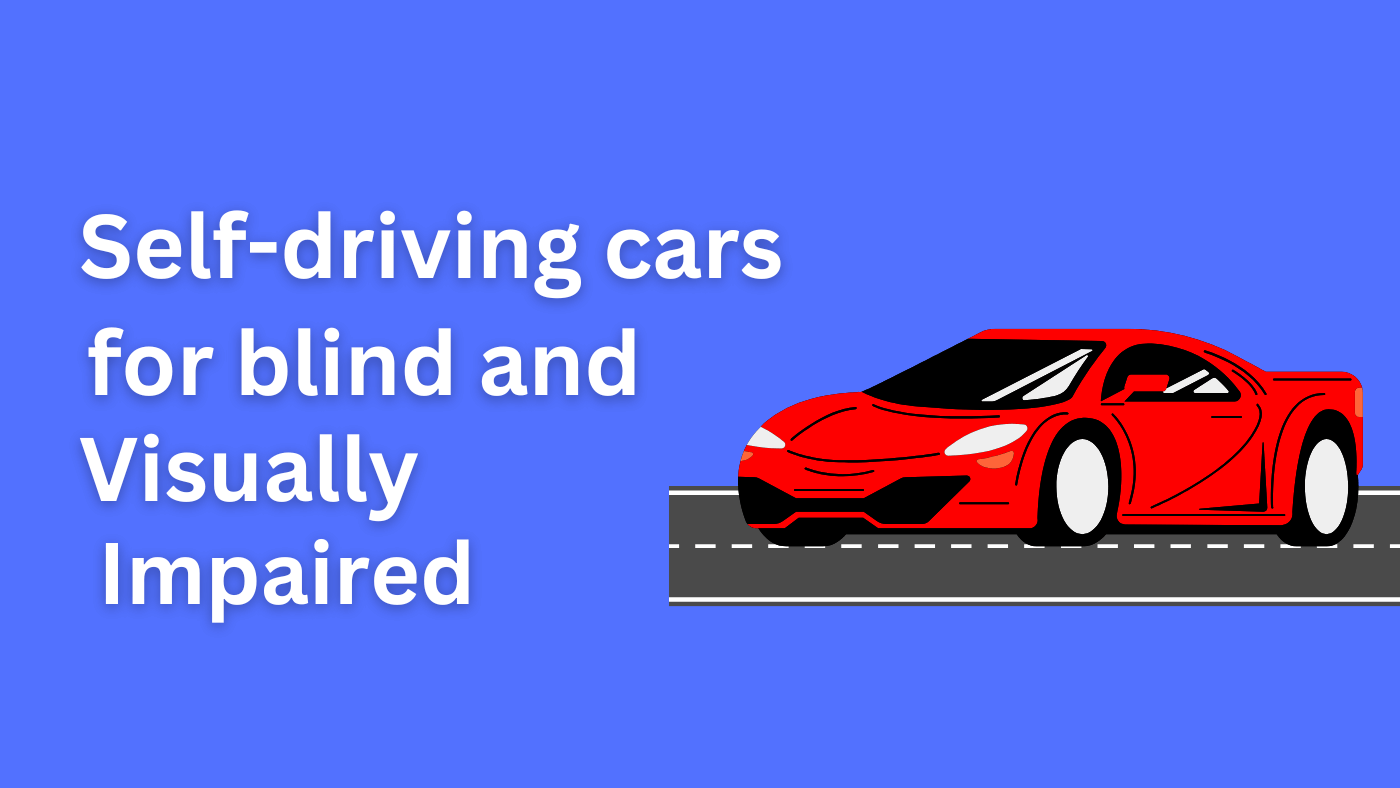Transportation is more than just a way to get from one place to another. It’s about the freedom to go where you want and connect with others. For blind and visually impaired individuals, access to reliable transportation is crucial—it opens doors to opportunities, independence, and participation in society.
For those who cannot see, the idea of self-driving cars brings hope and excitement. Imagine the freedom to visit friends, attend job interviews, or explore new places independently. This is the promise of autonomous vehicles, and with 2025 on the horizon, this technology is becoming a reality.
What Are Self-Driving Cars, and How Do They Work?
Self-driving cars are like having your own personal driver. They use cameras and sensors to see what’s around them, and a smart computer (AI) helps them make decisions about how to drive.
Here’s how they work:
- Cameras: These act like the car’s eyes, giving it a full view of the road.
- Sensors: These help the car detect things like pedestrians, other cars, or even potholes.
- AI (the brain): This helps the car decide how to steer, speed up, or stop.
Think of the car as a team: the cameras and sensors gather information, while the AI processes it and makes decisions. This teamwork ensures that the car can safely and smoothly drive you to your destination.
Why Self-Driving Cars Matter for the Visually Impaired
For many visually impaired individuals, transportation is a major challenge. I recall an instance when I couldn’t attend a learning course that I had committed to three times a week because no one was available to drop me off. Despite how important the course was to me, I missed several sessions because of transportation problems.
This experience showed me how essential self-driving cars could be. These vehicles would make it easier for visually impaired individuals to travel independently. Self-driving cars promise to make work, education, and social events more accessible. Most importantly, they give us the confidence to travel safely and comfortably without relying on others. Public transport or asking for rides can be frustrating, but self-driving cars would let us go anywhere, anytime.
Owning or Subscribing to a Self-Driving Car
As self-driving technology improves, owning or subscribing to a self-driving car is becoming a real option. Here’s what it could mean for visually impaired individuals:
Benefits of Owning a Self-Driving Car
- Personal Freedom: Owning a self-driving car means you can go wherever and whenever you want, without needing to wait for a ride.
- Custom Features: You could use voice commands or other tools to control the car in ways that meet your needs.
- Sharing with Others: You could share the car with family or neighbors, making it even more useful.
Challenges of Ownership
- Cost: Self-driving cars can be expensive to buy, insure, and maintain. But governments or car companies might offer ways to make them more affordable.
- Rules: Some areas still require a licensed driver to oversee the car, even if it’s driving itself.
- Technology: Some self-driving cars may still need help from a person in certain situations.
Subscription Models
If owning a car isn’t for you, subscription services offer another option:
- Tesla Full Self-Driving (FSD): This service allows you to pay for access to Tesla’s self-driving technology.
- Autonomy: This service lets you drive a Tesla Model 3 without owning it.
- Waymo One: This is an app that lets you order an autonomous ride whenever you need it.
These services make self-driving cars more accessible for those who don’t want to own one.
Autonomous Ride Services You Can Use Today
Some self-driving cars are already on the road, making it easier for visually impaired people to get around. For example, one visually impaired individual in Phoenix shared how Waymo One helped them attend a family event without needing anyone’s help. Using an app, they easily booked a ride, and the car’s AI guided them through busy streets.
Services like Waymo One and Baidu’s Apollo Go are leading the way in making transportation easier for people who are visually impaired. Here are some current self-driving ride services:
- Waymo One: Available in cities like Phoenix, San Francisco, and Los Angeles, Waymo offers fully autonomous rides. Learn more on Waymo’s website.
- Baidu’s Apollo Go: This large autonomous ride service is active in China and plans to expand. Learn more on Baidu’s website.
- Uber Robotaxi: Uber, working with WeRide, is testing self-driving taxis in Abu Dhabi.
- Tesla’s Future Plans: Tesla is planning to launch a self-driving taxi service by the end of 2025.
These services show how the future of transportation is already taking shape.
Resources to Learn More
If you want to explore more about self-driving cars, check out these resources:
- Waymo One: Find out more about their autonomous ride services on Waymo’s website.
- Baidu Apollo Go: Learn about Apollo Go’s global plans on Baidu’s website.
- Tesla Full Self-Driving: Get details on Tesla’s FSD technology on Tesla’s website.
- National Federation of the Blind: See how they advocate for accessible transportation solutions on their website.
Looking Ahead
The future of self-driving cars is bright, especially for those who are visually impaired. As technology improves, affordable subscription services and easy-to-use features like voice commands could make self-driving cars available to more people. AI assistants may offer real-time support, making trips even easier.
These innovations promise a world where transportation is no longer a barrier. Self-driving cars can provide greater freedom and confidence for visually impaired individuals, changing the way we think about mobility.
Join the Conversation
As someone who is visually impaired, I’m excited about a future where self-driving cars are an everyday reality. How do you think these cars could change your life? Would you prefer to own one, or would a subscription service work for you? Share your thoughts in the comments or join the conversation on social media. Together, we can help create policies that support accessibility, back inclusive technologies like Waymo and Baidu, and raise awareness of how self-driving cars can change the lives of visually impaired people. You can also explore organizations like the National Federation of the Blind, which works to make transportation accessible for everyone.

